Missing and Murdered Indigenous Women (MMIW)
ACROSS THE UNITED STATES AND CANADA NATIVE WOMEN AND GIRLS ARE BEING TAKEN OR MURDERED AT AN UNRELENTING RATE.
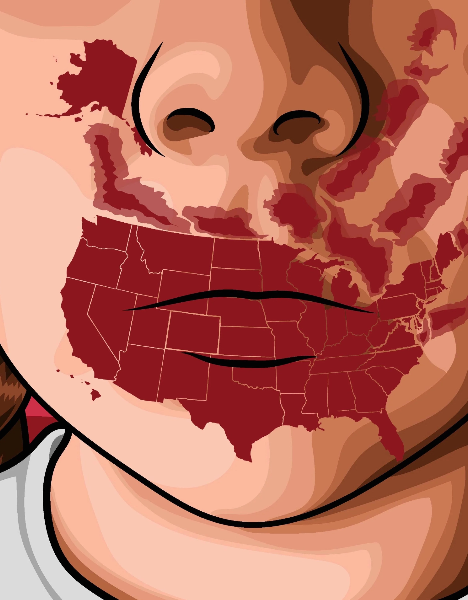
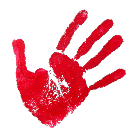
The red hand symbolizes the connection between the physical world and the spiritual world. Native Americans believe that the dead can see red, so by wearing red we invoke the help of our ancestors and spiritual guides.
MMIW RED HAND
Facts About Missing
And Murdered
Indigenous Women
There is widespread anger and sadness in First Nations communities. Sisters, wives, mothers, and daughters are gone from their families without clear answers. There are families whose loved ones are missing—babies growing up without mothers, mothers without daughters, and grandmothers without granddaughters. For Native Americans, this adds one more layer of trauma upon existing wounds that cannot heal. Communities are pleading for justice.
“The National Crime Information Center reports that, in 2016, there were 5,712 reports of missing American Indian and Alaska Native women and girls, though the US Department of Justice’s federal missing person database, NamUs, only logged 116 cases.”
The National Crime Information Center NamUs
The MMIW Red Hand
A red hand over the mouth has become the symbol of a growing movement, the MMIW movement. It stands for all the missing sisters whose voices are not heard. It stands for the silence of the media and law enforcement in the midst of this crisis. It stands for the oppression and subjugation of Native women who are now rising up to say #NoMoreStolenSisters.
Telling Their Stories
Why Is There Widespread Silence on the MMIW Issue?
There are numerous reasons, but at the forefront lie issues stemming from the Indian Relocation Act and federal policies. Many Native Americans do not live on the tribal lands or reservations (only 22%) and many frequent a lifestyle of transience between tribal and state lands. This presents a variety of crucial issues involving reporting policies, jurisdictional complications, and communication and coordination problems between agencies.
Native Americans residing in urban areas have few resources linked to their culture and tribal community. Many Urban Indians, people living in cities, fall into a “pipeline of vulnerability”: people of color, people experiencing poverty, people coming out of the foster care system, people lacking resources or family, people isolated emotionally, physically or psychologically. According to Janeen Comenote, executive director of the National Urban Indian Family Coalition, “poverty remains one of the most challenging aspects to contemporary urban Indian life. While I do recognize that a sizable chunk of our population[s] is solidly middle class, every Native person I know has either experienced poverty or has a family member who is. Housing and homelessness remain at the top-of-the-list of challenges.”
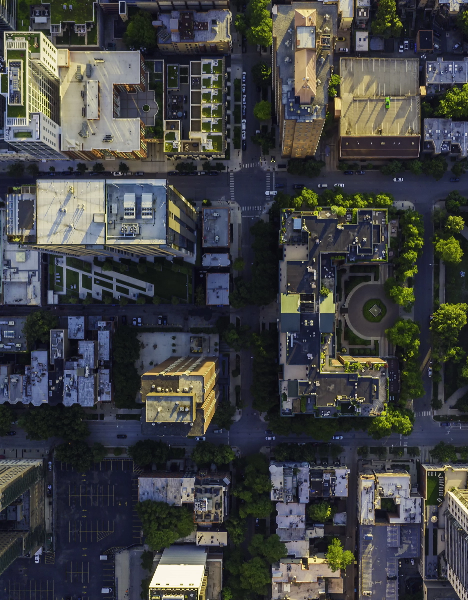
The double teepee tribal symbol is used to symbolize camp or Indian village, as where Native Americans live impacts silence on the MMIW issue.
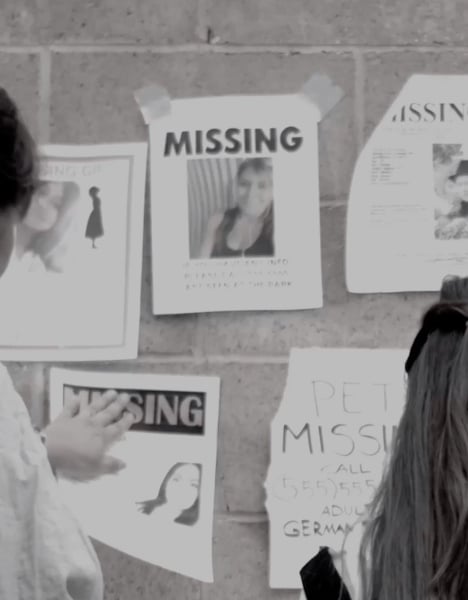
The mountain symbol comes from the Cherokee Tribe and is used here to represent the notion of “challenges.”
The Numbers Don't Lie
Statistics on Missing
and Murdered
Indigenous Women
Native Americans today face some extraordinary challenges. These statistics from the Urban Indian Health Institute were compiled from a survey of 71 U.S. cities in 2016. The numbers speak for themselves: Native American women make up a significant portion of the missing and murdered cases. Not only is the murder rate ten times higher than the national average for women living on reservations but murder is the third leading cause of death for Native women.
"...murder is the third leading cause of death for native women."
Source: Urban Indian Health Institute
This is startling as Native people only make up 2% of the US overall population. Urban Indian Health Institute reports the youngest MMIW victim was a baby less than one year old and the oldest victim was an 83-year-old.
280
Were cases of murdered indigenous women
128
Were cases of missing Indigenous women
506
MMIWG cases were identified across 71 selected urban cities
29
The median age of MMIWG
98
Were cases with an "unknown" status
MMIW Day
When is MMIW Day?
There are two important days on the calendar for the MMIW cause: February 14 and May 5.
February 14 is MMIW National Day of Action and Awareness. On this day, activist groups organize Women's Memorial Marches around the country to protest class disparity, racism, inequality, and violence against Native Americans. The largest march takes place in Vancouver, BC, and has become a central point in the fight against MMIW.
May 5 is the official MMIW Day and is the most widely celebrated across the US and Canada. Every year, individuals wear red, and attend marches, rallies, bike rides, fundraisers, and more to raise awareness for the MMIW cause and fight against the injustice that's happening to Native women and their families every day.
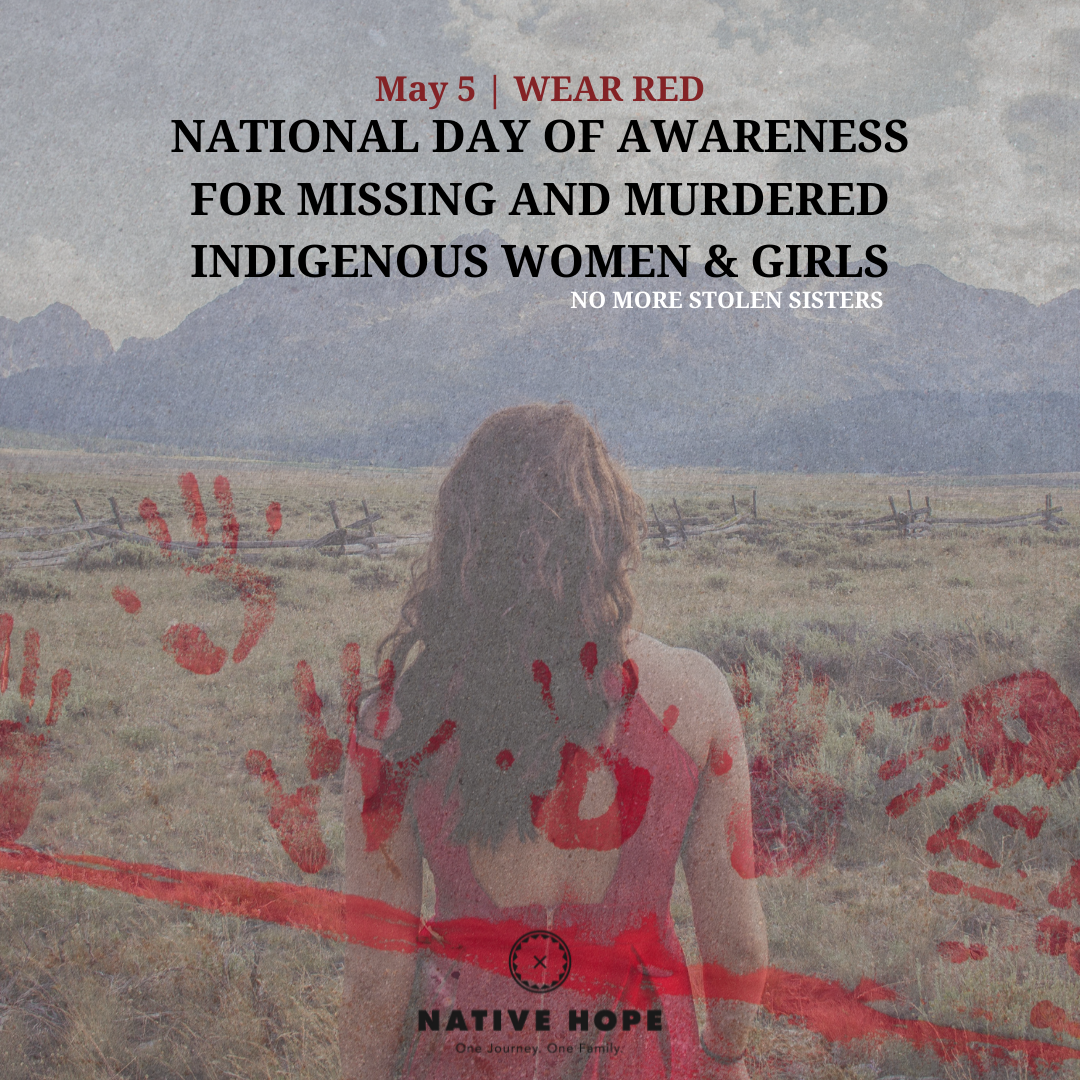
This tribal symbol is used to symbolize day and night, or the concept of time.
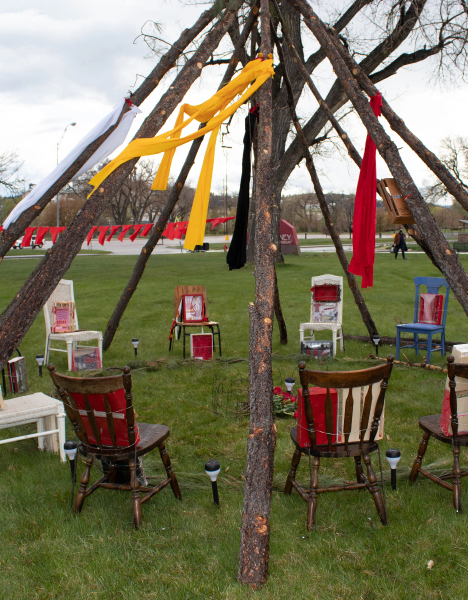
The man tribal symbol is used to symbolize human life.
Men and Boys, Too
MMIP: Because It’s Not Just Women Who Go Missing
While women and girls are the primary victims of violence and human trafficking among Native Americans, they are not alone. People of all ages are victims of these horrific crimes, including men, boys, infants, and the elderly.
In fact, 82% of indigenous men are victims of violence in their lifetime and Native children are more likely to experience trauma and abuse than their non-Native peers. When educating yourself about the struggles of Native Americans, it's important to recognize and remember all victims of these crimes.
What People Get Wrong
Stereotypes of Native Americans Perpetuate Injustice
Due to the lack of tribal jurisdiction beyond reservation borders, Urban Indians receive less than adequate assistance when a loved one goes missing. America has written a stereotypical narrative for its First People:
“They are lazy, drug addicts, and alcoholics who rely on the government to survive.”
Moreover, this modern stereotype was created through acts of colonization and cultural assimilation. Pre-colonization, Native societies traditionally revered and honored the sacredness of women. Women held positions of authority and did a large portion of labor within their camps, but the European colonists with patriarchal views took the women as slaves to the men. Soon, Native women had been victims of rape, violence, and submission. This mistreatment can be traced throughout America’s history. Natives were viewed as “savages.”
In Andrea Smith’s paper “Not an Indian Tradition: The Sexual Colonization of Native Peoples,” she explores the connection between sexual violence and colonialism in the lives of Native people in the United States. Smith reveals that Natives were viewed as “dirty” for their lack of clothing which in the minds of the colonists made them “polluted with sexual sin.” They were seen as less-than-human—therefore, “rapable.”
Now, when a Native woman is reported missing, these negative stereotypes hinder the search process. Law enforcement tends to turn a blind eye, fail to take the report seriously, and do little to assist. The media rarely picks up on the story and if they do, there is normally a negative spin on the story making the victim seem at fault.
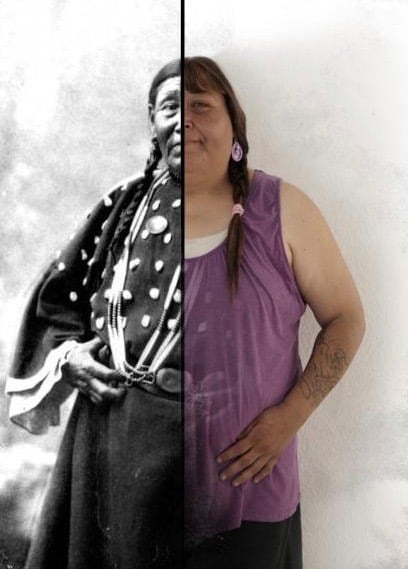
The double arrows tribal symbol is used to symbolize war, as stereotypes made create injustice.
Education. Change. Prevention.
Native Hope and its allies are committed to putting an end to MMIW for good.
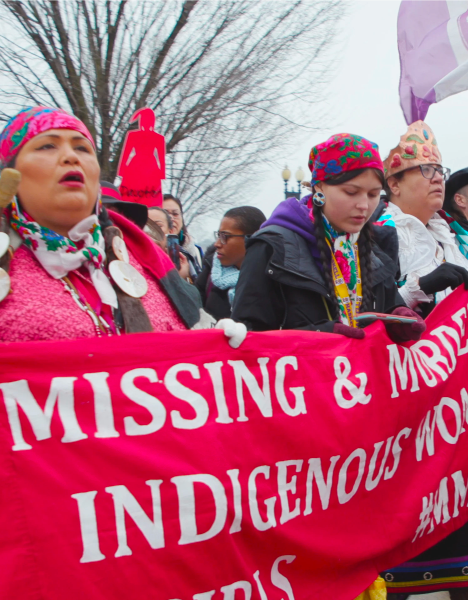
The eagle feathers tribal symbol is used to symbolize chief or leaders, as these women are leading the charge.
Taking Action for Change
Women Leading the Charge
Thankfully, women and men, Native and non-Native, are working together through dozens of organizations to give voice to the MMIW.
MMIW found itself as a movement first in Canada where the grassroots efforts to raise awareness found footing around 2015. Since this time, MMIW has grown and is gaining momentum. It is because of the efforts of Native women and their families this crisis is gaining momentum. Women are finding innovative ways to sound their voices on this issue as it is profoundly affecting communities.
There has been increasing political attention to this issue. Arizona Governor Doug Ducey recently signed legislation to create a committee on the issue made up of law enforcement, victims’ families, tribal leaders, and more.
At the federal level, the Not Invisible Act was introduced this spring in both the House and Senate. According to a statement from Rep. Deb Haaland’s office, this is the first bill to be introduced by four members of federally recognized tribes: Representatives Deb Haaland (Pueblo of Laguna), Tom Cole (Chickasaw Nation of Oklahoma), Sharice Davids (Ho-Chunk Nation of Wisconsin), and Markwayne Mullin (Cherokee Nation).
The Not Invisible Act would bring together a committee of law enforcement, tribal authorities, federal partners, and more to study and discuss solutions to the crisis of murdered and missing Indigenous women and to establish better systems of coordination.
Voices of Hope
Rep. Deb Haaland, Voice of Hope for MMIW
In January of 2019, Native Hope team members attended the Indigenous Peoples March. There we captured Congresswoman Deb Haaland of New Mexico addressing the crowd with a message of hope.
One of her platforms is to combat the MMIW crisis. In an April 2, 2019 press release, Congresswoman Haaland explained,
“The stakes are too high to keep the status quo in place. I’m introducing potentially life-saving amendments so that we can begin to break the cycles of domestic violence and missing and murdered indigenous women by providing resources and information sharing amendments to keep survivors of domestic violence safe from harm ultimately preventing future cases.”
Haaland has proposed two amendments to the Violence Against Women Act Reauthorization (VAWA), HR 1585.
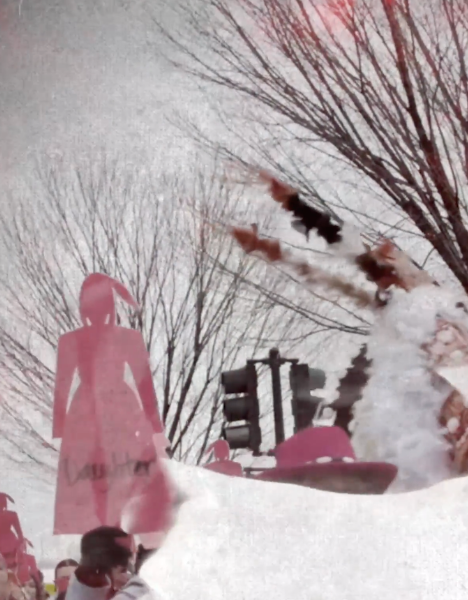
The eight pointed star tribal symbol is used to symbolize hope and guidance, as there is a voice of hope for MMIW.
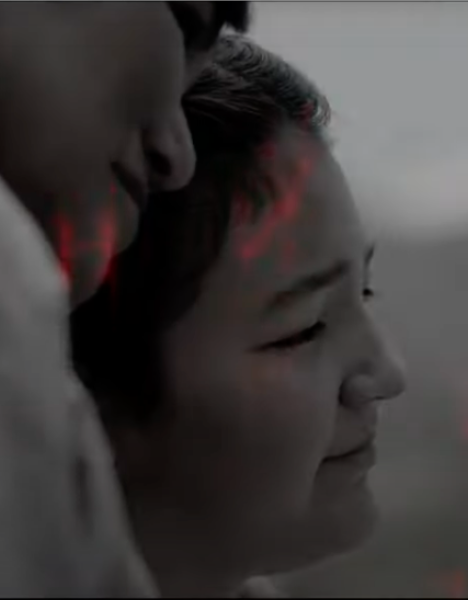
The arrowhead tribal symbol is used to symbolize alertness, as this film is raising awareness to the MMIW issue.
Watch the Trailer
Voices Unheard,
Draws Attention to
the MMIW Issue
In 2019, Native Hope embarked on a journey to create a short film to raise awareness about an American crisis: Missing and Murdered Indigenous Women (MMIW). Orlando Skidmore (White Mountain Apache), screenwriter, and cinematographer brought forward his idea for a storyline to highlight some of the issues Natives face when combating systemic apathy surrounding MMIW.
In the film, Marty Coulee is a Native American photographer and entrepreneur living the good life in New York City. When her Native American business partner, Jess, receives an unexpected opportunity to shoot in the American Southwest, they embark on an adventure to Arizona. However, the fun is short-lived when Jess vanishes without a trace. Consequently, Marty deals with her past, a system of racism, and false allegations—all while trying to find her friend Jess. These events fundamentally change Marty. She vows to be a voice for the voices unheard.
Since storytelling remains core to Native Hope’s mission, the team moved forward with the vision. Mark Lewis (Sac and Fox/Gila River), a filmmaker, worked closely with Orlando on a script and on assembling a crew and cast, plus location, supplies, and equipment needed to create the short film. Native Hope crew and team members assisted with pre-and post-production work in order to make this film a reality.
We hope Voices Unheard provides a vital context for those seeking to understand issues facing Native American women and girls.
Cast and Crew Comments about the Film
A special thanks to all involved—from actors, crew, grips, and producers. It was a team effort with people from many nations and cultures combining talents in a unified way to raise awareness for our stolen sisters.
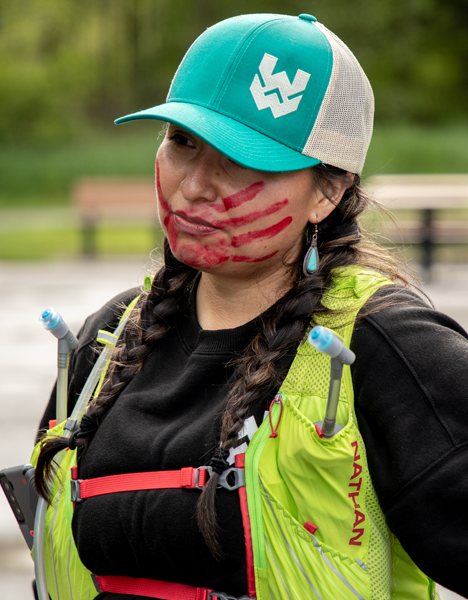
The arrowhead tribal symbol is used to symbolize alertness, as this film is raising awareness to the MMIW issue.
Watch the Trailer
New Film, Skeet Fighter
While we grieve for the victims, we are also determined to fight back against this injustice of babies growing up without mothers, mothers without daughters, and grandmothers without granddaughters.
We need to give a voice to those unheard.
And Melissa Skeet did just that.
In 2017, Melissa was a victim of domestic violence, where she almost lost her life.
Melissa discovered that roller derby was not only a savior for her during this time, but the empowering athletes within this sport brought her back to life. Her love for the outdoors and roller skating turned into her passion for trail skating.
Through her trail skating, Melissa brings awareness and education about Missing and Murdered Indigenous Persons, health, and healing.
#NOMORESTOLENSISTERS
Our Commitment to the Missing and Murdered Indigenous Women Movement
Native Hope assists in the efforts of these courageous individuals and organizations on the frontlines of the MMIW movement by providing opportunities to raise awareness in a variety of ways. Through providing a platform, tools, and resources, Native Hope aspires to assist in bringing MMIW awareness to the forefront. In order to stop this victimization of Native sisters, the world must be educated. Then, prevention can begin.
At Native Hope, we are passionate about raising awareness around Native issues and sharing stories of light and hope. We hope that this guide to Missing and Murdered Indigenous Women has increased your knowledge and inspired you to speak and work for justice. #NoMoreStolenSisters
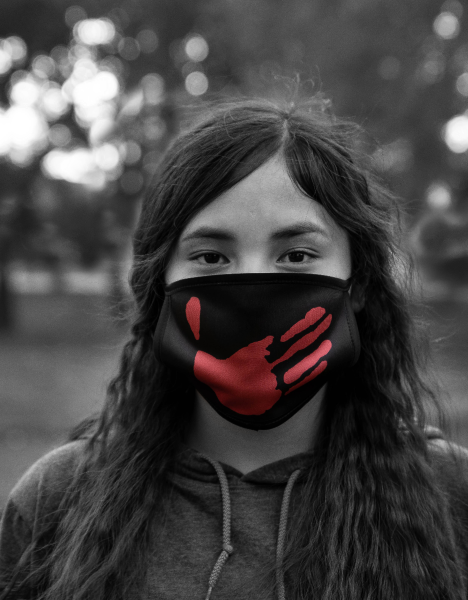
The thunderbird track tribal symbol is used to symbolize bright prospects, as Native Hope aspires to bring MMIW the awareness it deserves.











